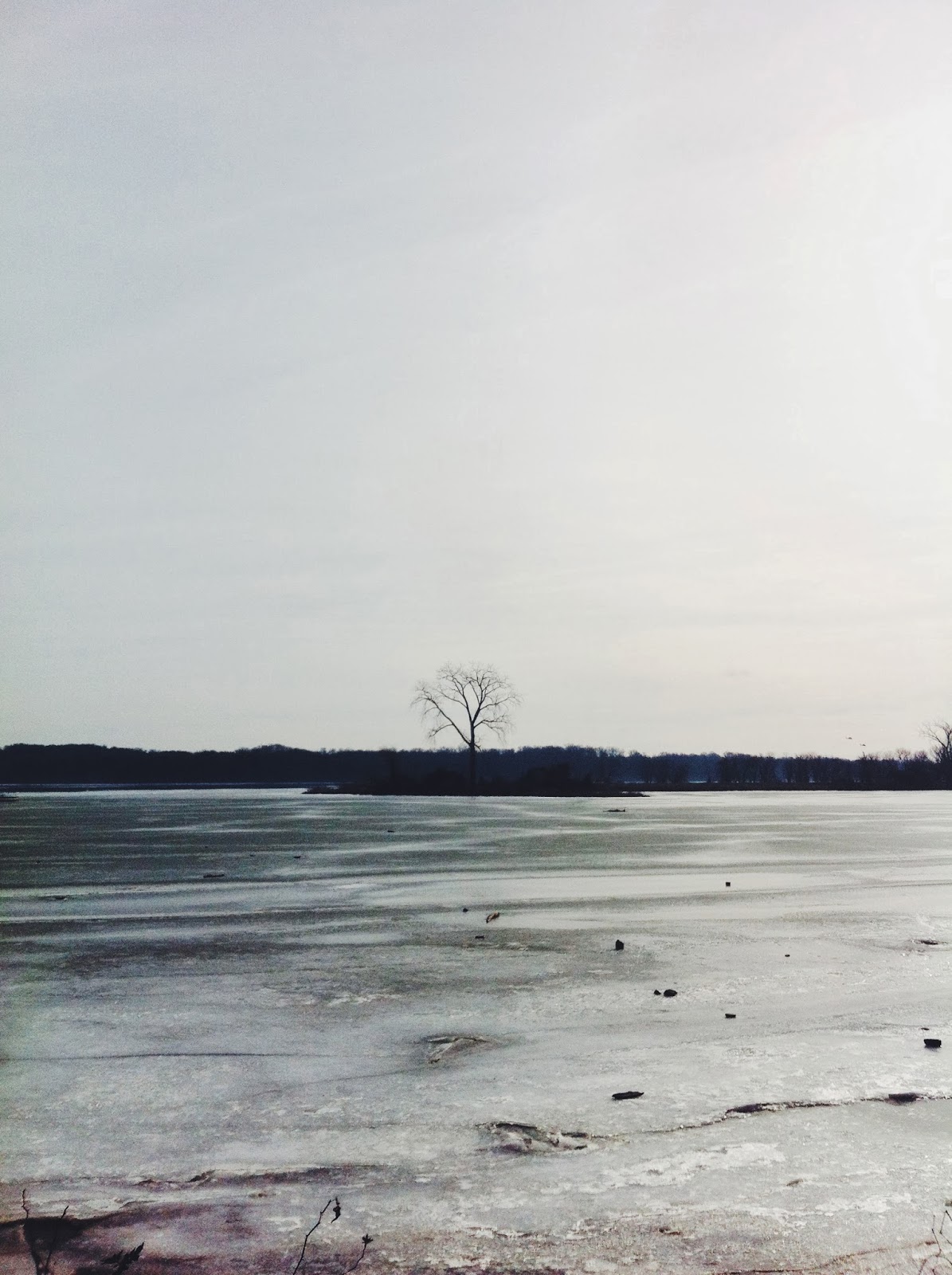Every Sunday Friends of Dyke Marsh gather at the Belle Haven picnic area to hem and haw over their scopes. It was a balmy 35 degrees this morning as bird names started to get called out.
"Common merganser, canvasbacks, oh there's a ruddy duck. Oh look, there are our two mating bald eagles up there on the power lines."
The flock of retirees and the one or two spry beginners quickly arranged themselves in my mind, splitting into expert, intermediate and beginning birders based on their level of bird fluency.
Two snowy topped experts squabbled over a bird.
"But don't you see the red there and the white neck and breast? That's a Red Necked Grebe," expert number one said.
"That's a Horned Grebe you incompetent fool," expert number two launched back jokingly, both experts bent over their scopes looking furiously out over the Potomac river.
They laughed over the disagreement and told stories about mistaken IDs.
"My dear, sweet mother-in-law, bless her heart, she's no longer with us, always used to get the names wrong. She tried so hard but it was the funniest thing. She'd say, 'Come look, there's a Great Horny Owl,' to which I always replied, 'How can you tell?'" Everyone clucked and cackled knowingly.
As we wound our way down the marina and over to the Dyke Marsh trail I fell in stride with a birder I pegged at intermediate. Age plays heavily in the scale of expertise in this field but woe to the new birder who always makes that generalization. As a new birder I have a lot to learn still so I take cues wherever I can. Learning commonality of local birds is as easy as picking up on the group tone. As we entered the ivy blanketed thicket of the marsh a hushed cry broke out from one of the birders.
"Catbird! Oh this makes my day, catbird over here!"
I saw a flit of grey fly past into the bushes followed by a long tailed black and grey blur.
"Oh and it's followed by a Mockingbird. What a day," said intermediate birder.
I followed intermediate birder, determined to pick his brain. He generously pointed out birds and identified calls out loud so I could stealthily rack up a list.
"Hear that? Carolina Wren. One of the most common birds we have here," he said.
"That's actually one of the few I've identified on my own here. That and the Black Capped Chickadee," I beamed.
"Ah be careful with that. We actually have Carolina Chickadees here. If you posted on Ebird you saw a Black Capped here you'd be in for an interrogation on how you could tell the difference. With those two it's best to look at their span chart. Here we have Carolina. Go over to the Shenandoah and they have Black Capped. Do you have a guide?"
"Well I was actually using you all as a guide today. I have one but I figured I would try to learn from the best today."
"You're lucky to have so many experts in the group then. John here is an expert."
"No no," the man ahead of us chuckled without turning around. His felt brimmed hat sat correctly on his head and his steps were measured and straight, if a bit tottering.
"I like to consider myself a birding groupy. Eighty year old groupy."
"Oh right," said intermediate, "You're a 40 year beginner, I forgot."
John smiled back at us. His face was painted red from the cold, a mask of rose covering his nose and cheeks, but his eyes were bright and friendly.
"Their song is almost imperceptibly different," he said of the chickadees, "That is, to us, anyhow. I imagine to them it sounds very different indeed."
The names of the birds we saw flitted out of my brain almost as quickly as the names of my companions, but these kinds of activities require some diligence to master. My hope this year is to get to one a month. I can't wait to see what new birds the changing weather will bring us.






No comments:
Post a Comment